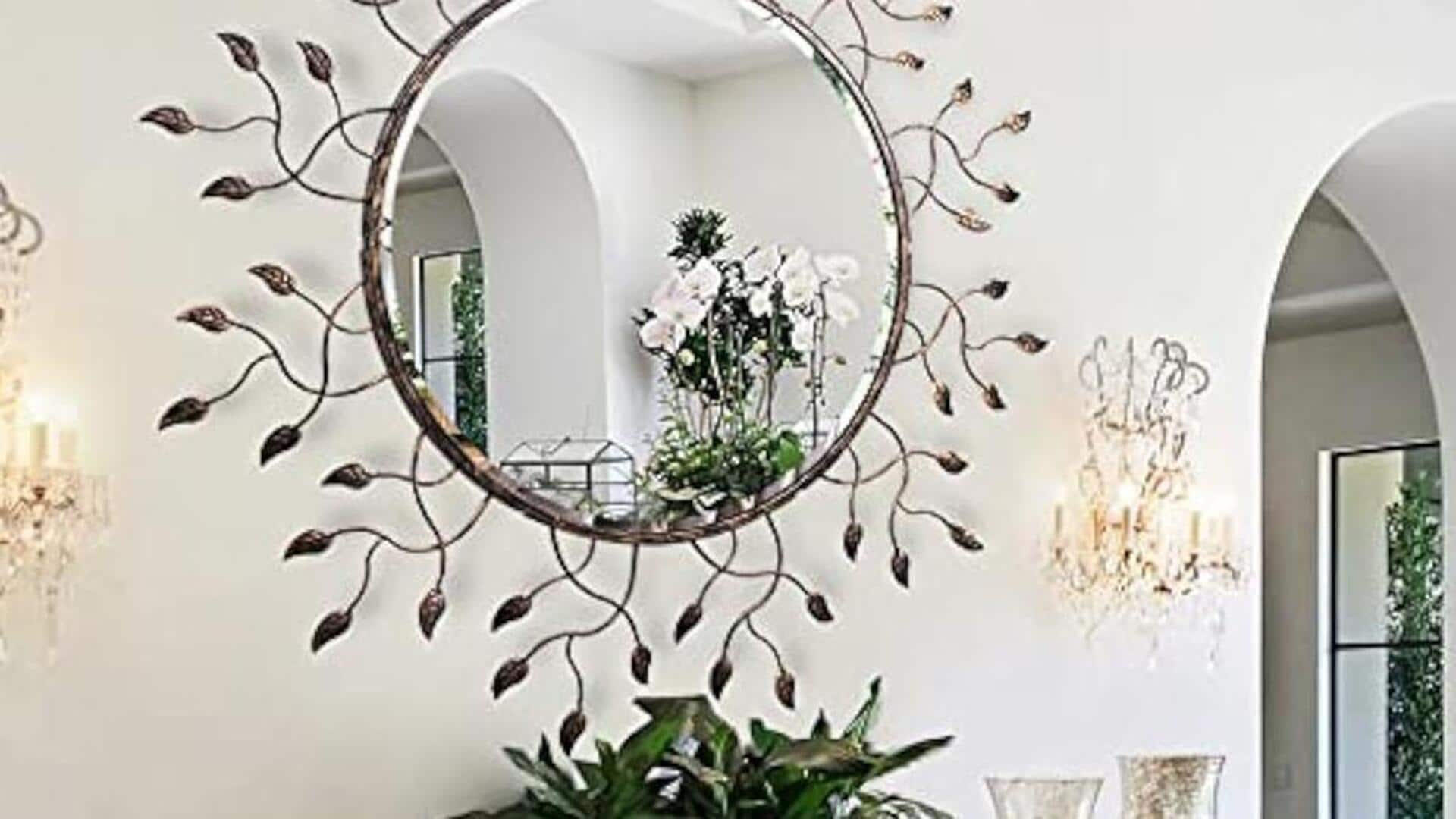
Decor goals 101: Mirrored wall decorations to elevate your space
What's the story
Mirrored wall decorations can transform any space by adding depth and light. These versatile elements not only enhance the aesthetic appeal but also create an illusion of a larger area. Whether used in living rooms, bedrooms or hallways, mirrors can reflect natural light and brighten up spaces. They come in various shapes and size allowing for creative arrangements that suit different styles and preferences.
Size matters
Choosing the right mirror size
Selecting the appropriate mirror size is crucial for achieving the desired effect. Large mirrors can make small rooms appear more spacious by reflecting more light and creating a sense of openness. Conversely, smaller mirrors work well as accent pieces in larger areas. Consider the wall dimensions and furniture placement to ensure that the mirror complements, rather than overwhelms, the space.
Strategic positioning
Placement for maximum impact
The placement of mirrored wall decorations has a lot to do with how they affect a room's aesthetics. Placing mirrors opposite windows ensures maximum reflection of natural light, brightening up darker areas. Placing them behind furniture such as sofas/tables adds depth without compromising floor space. Play around with angles to see what best highlights your room's layout.
Variety in design
Exploring different shapes and styles
Mirrors also come in a plethora of shapes ranging from round, square, rectangular to those with abstract designs to suit various tastes. The frame style also matters; ornate frames lend an air of elegance while minimalist frames give a modern touch. Mixing up shapes in an area can also create an artistic focal point that draws attention without overpowering other decor elements.
Care instructions
Maintenance tips for longevity
Proper maintenance guarantees your mirrored wall decorations stay pristine through the years. Regular cleaning using non-abrasive solutions keeps dust at bay and maintains clarity. Avoid placing mirrors in areas that are directly exposed to sunlight for long hours, as this may lead to fading or warping over the years with heat exposure.